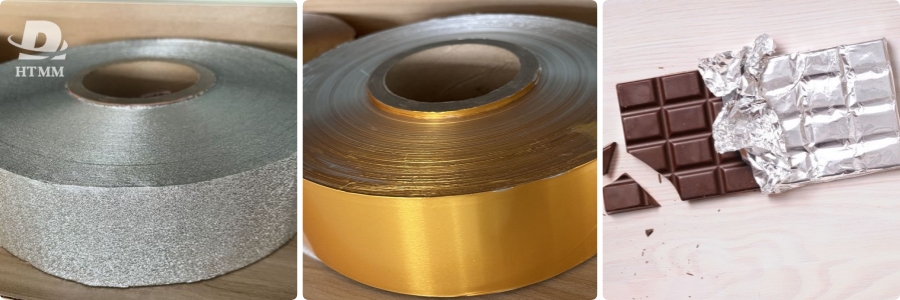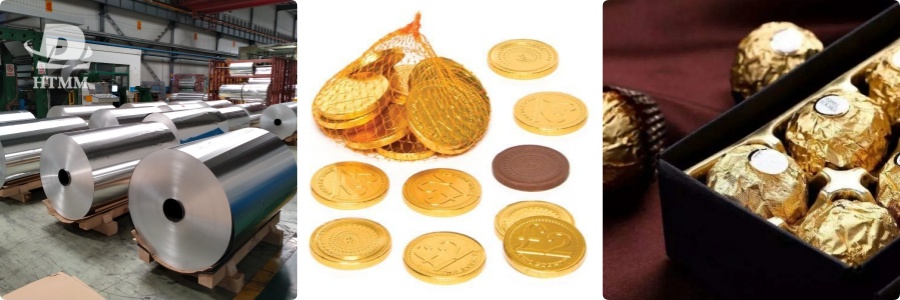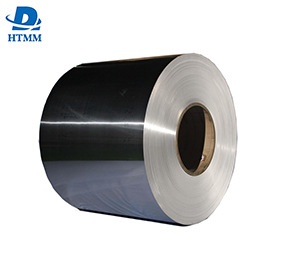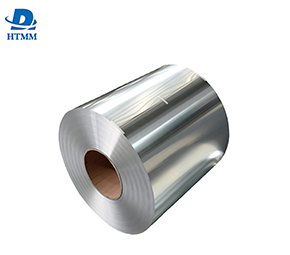One of the biggest considerations for chocolate packaging is preventing heat transfer that causes melting and related quality issues. chocolate foil has a low melting point, ranging from 86°F to 104°F, depending on type and formulation. Even small temperature fluctuations can negatively impact texture, taste, and overall consumer experience. During transportation and shelf storage, chocolate is exposed to varying environmental conditions, which can pose a risk of melting if the packaging material is not adequately insulated.

Aluminum foil has high reflectivity and provides excellent thermal insulation. Approximately 90% of infrared radiation from external heat sources is reflected away rather than absorbed by the foil. This maintains the integrity of the chocolate and prevents it from exceeding its melting point during distribution and display. HTMM chocolate foil manufacturers. Alternatives such as paper or plastic film provide poor insulation and are more likely to conduct heat into the chocolate filling. Aluminum foil creates a strong insulating layer that preserves the quality of the chocolate even when the temperature in a warehouse or retail store fluctuates.
Maintaining the optimal moisture content of chocolate is another core requirement, as excessive moisture can lead to blooming, condensation or other defects. Unfortunately, chocolate is highly hygroscopic and easily absorbs water vapor from its surroundings over time. The packaging must form an impermeable moisture barrier to prevent deterioration of texture, flavor and appearance - this is where aluminum foil plays a key role.
The dense molecular structure of aluminum foil makes it highly impermeable to gases such as water vapor. It can withstand more than 12,000 cans of soda without leaking or developing holes due to internal pressure. This dense barrier prevents the absorption of surrounding moisture, thereby extending the shelf life of the chocolate filling. In contrast, the film and paper materials used in some chocolate packaging are semi-permeable, allowing moisture to gradually diffuse out during weeks or months of storage. Aluminum foil's strong moisture protection ensures the quality of the chocolate until the final consumption date.

Beyond functionality, attractive package design influences consumer purchasing decisions in a competitive retail environment. chocolate foil thickness. Aluminum foil supports realistic printing of brand logos, images and colorful designs to attract attention on store shelves. Advanced printing technologies such as offset, gravure, flexographic and digital printing can reproduce complex patterns or photo-like visuals at high resolution on aluminum foil substrates. This makes it ideal for limited edition seasonal flavors, premium brands or branded chocolate varieties seeking bright packaging.
Alternative materials have certain limitations - paper can only support basic inks, while plastic film is better suited for simpler graphics. Aluminum foil accepts the widest range of printing inks and coatings, producing an eye-catching packaging appearance with a resolution of more than 300 dpi. Its smooth, non-porous surface allows detailed printing to remain clear and will not absorb or deform over time. advantages of chocolate foil. This enhanced shelf appeal and graphic versatility is difficult to replicate on common chocolate packaging alternatives such as paper or film laminates.
Aluminum foil brings adaptability to packaging format design. It can be converted from a flat roll to a custom shape through thermoforming to accommodate a variety of fill sizes, product types or brand statements. Techniques such as cold forming can achieve complex three-dimensional contours without high energy consumption or tool wear. This facilitates innovations such as snack bar sleeves, decorative molded boxes or unique sleeves tailored for single servings of chocolate – all with a hermetic heat seal for reliable barrier protection.
With sustainability taking center stage in packaging choices, aluminum foil’s recyclability makes it an environmentally friendly choice. According to independent studies, aluminum foil is one of the most recycled of all materials and can be recycled indefinitely without loss of quality or performance. After use, the foil sheets can simply be baled, compressed and sent for remelting. The energy required to recycle aluminum is just 5% of the energy used to produce primary aluminum from bauxite mining.

In contrast, most plastic films and laminated paperboards used in alternative chocolate packaging are difficult to recycle and often end up in landfill. The multiple material types in composite packaging also reduce recyclability. Aluminum foil avoids this problem as a standalone single material, simplifying sorting and recycling. Its excellent recyclability through dedicated recycling programs completes a true circular economy. Top chocolate brands recognize aluminum’s sustainable pedigree as a way to promote its ecological value to socially conscious consumers.
In addition to its performance benefits, aluminum foil also has value as a cost-effective packaging solution compared to common alternatives. At just 6-15 microns thick, aluminum foil is very thin, allowing for maximum packaging-to-product ratios in warehouse storage and shipping logistics. Less material means lower material costs per case compared to bulkier paper or thick plastic films. Recyclability also increases long-term savings – recycled aluminium retains its material properties, so foil doesn’t become waste after first use like many other packaging substrates.
Aluminium’s high strength-to-weight ratio enables ultra-thin, strong packaging that won’t break during production, filling and distribution. Less material is required to achieve the same barrier requirements compared to thicker rigid plastics or multi-layer films. Coupled with the long shelf life of product quality, foil excels across the entire packaging lifecycle, from initial cost to overall economic and environmental impact comparisons. This price/performance ratio supports a competitive chocolate product offering within tight retail margins.





